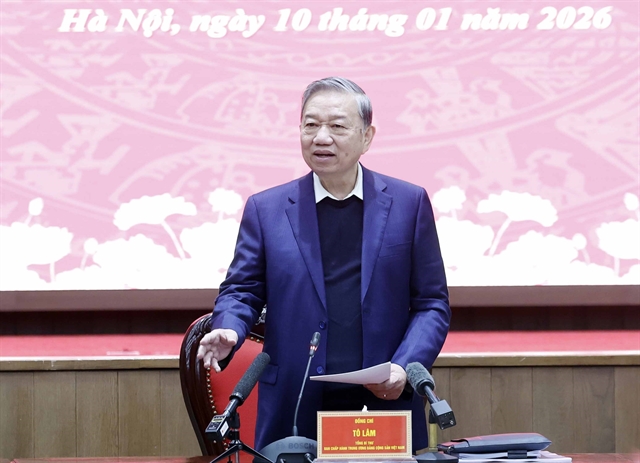 Opinion
Opinion

Đinh Việt Thắng, director general of the ACV, talks to Tuổi Trẻ (Youth) newspaper about the need to expand airport services
| ||
| Đinh Việt Thắng. — Photo tuoitre.vn |
Đinh Việt Thắng, director general of the ACV, talks to Tuổi Trẻ (Youth) newspaper about the need to expand airport services
Will you please give us an overview of the current operation of our civil airports?
Việt Nam now has 22 airports, nine of which are international airports and are 13 domestic. These airports are designed to serve 90.4 million passengers per year. However, in 2018 alone, those airports served 103.4 million passengers. Such an increase in the number of passengers has created huge big pressure on airport authorities to upgrade infrastructure to meet the increasing demand of passengers, particularly airports which are overloaded compared to their design capacity.
Can you tell us about airports that are overloaded and those that still have space for expansion?
Tân Sơn Nhất Airport was designed to serve 28 million passengers per year, but in 2018, over 38.3 million passengers went through the airport. At Đà Nẵng Airport, 13.2 million passengers passed through last year despite its limited capacity of 10 million passengers. Cam Ranh Airport also had the same problem.
Thọ Xuân, Cát Bi, Vinh, Phú Cát and Tuy Hòa have already reached their capacity.
Other Vietnamese airports not mentioned above still have room to serve passengers in the coming years.
What are the main reasons leading for these problems at Vietnamese airports?
Việt Nam’s civil aviation sector has achieved average growth of 15.3 per cent per annum, and all airports have received more funding to upgrade infrastructure to meet the increasing demand. However, some airports have been overexploited. I just want to mention two key factors;
First, the world economy has experienced a lot of ups and down while the international civil aviation market has experienced many ups and down; Meanwhile, Việt Nam’s airline service market is in the process of developing – this is a big challenge for Vietnamese airlines.
Second, capital shortages in the course of development is the biggest challenge that airlines have been facing, particularly funding from the Vietnamese Government.
Tell us about the future development plans for Vietnamese airports?
The Việt Nam Airline Corporation (VAC) has requested the Government to allow it to mobilise money from different sources to upgrade the runways at Cam Ranh and Cát Bi airports. The VAC has also asked the Government to allow it to apply the Public Private Partnership model to build Vân Đồn International Airport in Quảng Ninh Province.
Investors have expressed an interest in investing in the construction of Terminal 3 at Tân Sơn Nhất to raise its capacity to 50 million passengers per year. How do you respond to their proposal?
To cater for more passengers, it is imperative for Tân Sơn Nhất to build Terminal 3. According to the plan, it will have a capacity of 20 million passengers.
When the terminal is completed and put into operation, it will help make Tân Sơn Nhất become a driving force for the ACV to implement tasks assigned by the Government.
Will you please explain the idea of socialisation in airport infrastructure development in Việt Nam?
If we want to put the idea of socialisation into airport infrastructure development, we have to make sure the project benefits the rights and interest rights of the State, the people and enterprises. It is also very important to ensure the State’s supervisory role will be exercised throughout in the course of investment and a level playing between public and private investors. In short, all steps in the course of raising capital investment and selecting constructors must be transparent and accountable. — VNS